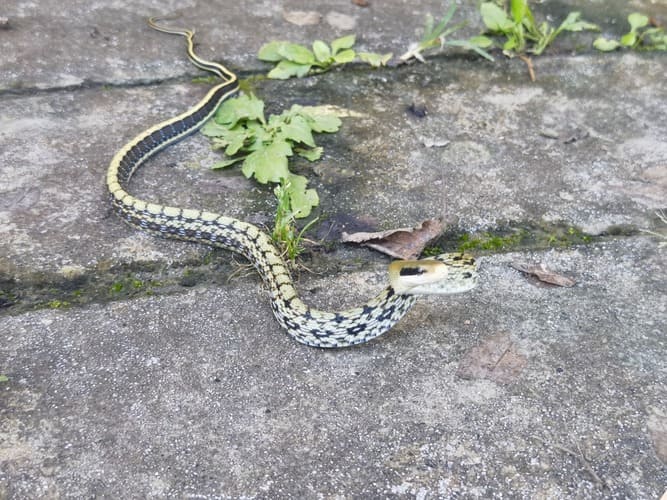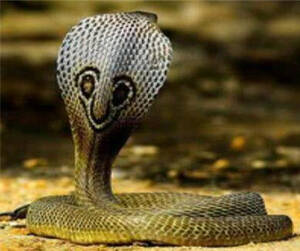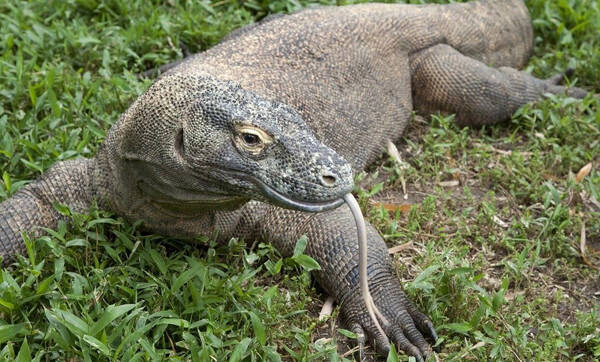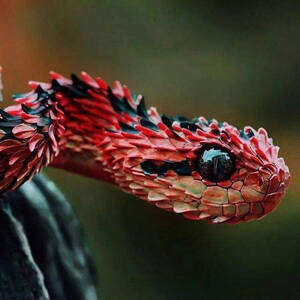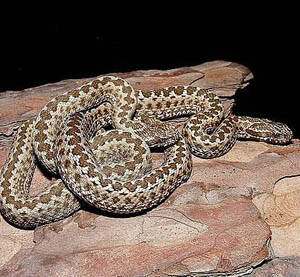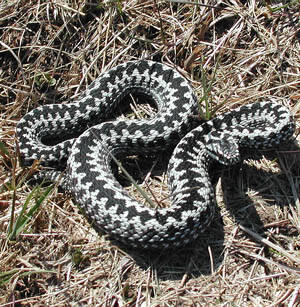Cylindrophis ruffus
IUCN
LCBasic Information
Scientific classification
- name:Cylindrophis ruffus
- Scientific Name:Cylindrophis ruffus,Red-tailed pipe snake,Red-tailed pipe snake, two-headed snake
- Outline:Squamata
- Family:Cylindrica
Vital signs
- length:About 43 cm
- Weight:No verification information
- lifetime:About 10-20 years
Feature
Small head, flat back and abdomen; brown body, with 40 pairs of white horizontal stripes on the sides
Distribution and Habitat
Distributed in Fujian, Hainan and Hong Kong; abroad, distributed in India, Malay Peninsula, Vietnam, Thailand and Myanmar.
Appearance
The total length is about 430 mm, and the tail is very short, only 10 mm. The head is small, flat dorsally and ventrally; the snout is wide and round; the eyes are small, and the pupils are slightly upright and oval; the nostrils are large and round, and are dorsally located. There are 6 (2-2-2) or 5 (2-2-1) scales on the upper lip, and the first one is the smallest; there are no internasal scales, cheek scales, or preorbital scales, and the left and right nasal scales are tangent to the snout; the frontal scales are very large, entering the orbit, and cutting the 2nd to 3rd upper lip scales; there is 1 postorbital scale, and 1+2 temporal scales. There are 21-21-19 rows of dorsal scales, which are round and smooth; there are 187 ventral scales, which are slightly larger than the dorsal scales; there are 2 anal scales and 7 subcaudal scales. The scales on the back of the head, the tip of the snout, and the edge of the lip are all warty. The whole body is brown, and there are 40 pairs of
Details
Cylindrophis ruffus is a species of snake in the family Shieldtail Snake.
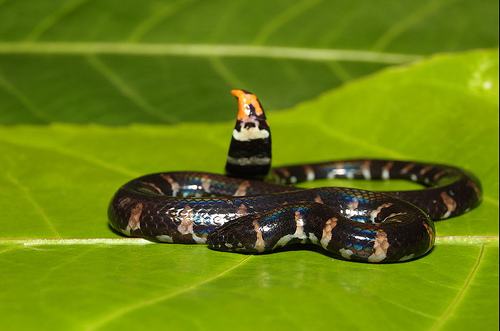
The red-tailed tube snake is a genuine burrowing snake. It usually stays in the soft soil of the rice field park and only appears on the ground when hunting. The function of this flat tail is only to imitate the flat head and neck of the cobra and raise the tail to warn when encountering a threat. The bright and eye-catching tail that looks like the head and neck of a cobra is the last means of self-protection for a red-tailed tube snake as a small non-venomous snake. When it raises its tail, its real head will be hidden in the soil or cracks in the rocks.
Although it is a small non-venomous snake, the red-tailed tube snake feeds on other snakes and eels, so it often appears near paddy fields to hunt. Its hunting method is the same as other non-venomous snakes, which is strangulation.
The reproduction method of the red-tailed tube snake is quite interesting. Like vipers and anacondas, it is ovoviviparous and produces 3-13 young snakes at a time (a bit small).
It is listed in the second level of the "List of National Key Protected Wildlife in China".
Protect wild animals and stop eating game.
Maintaining ecological balance is everyone's responsibility!

